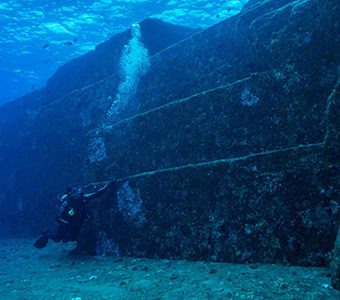No one really knows just how much plastic is in those many ocean garbage patches, but what researchers are now discovering is that, if you’re eating seafood – you’re eating that plastic too! The question is no longer will it get into the food chain?, the questions now are just how much of what is already in the food chain gets into us, and how damaging to our health will it be?
The facts
The facts are that because we are not designing products to reduce waste, or looking after all that plastic waste properly, global recycling rates are at 15%, and leakage even in developed countries is as high as 2% – which means we release about 8 million tonnes of plastic into our oceans every single year.
Plastic is not biodegradable, it simply breaks up into small pieces – Microplastics – from 5mm across down to nanometres across. This plastic soup is everywhere, but also concentrated into gyres – or great ocean garbage patches as we have taken to calling them – where the concentration is Microplastics is six times that of plankton.
Fish have been eating this stuff for a while, and now we know that zooplankton are also eating the plastic. In fact, the microplastic gets a coating of algae, and some fish are showing a preference for this over their natural food.
Where is that plastic now?
So where is the plastic now showing up? It’s a first world problem:
- Scientists at Ghent University in Belgium recently calculated that shellfish lovers are eating up to 11,000 plastic fragments in their seafood each year.
- A study by Plymouth University reported that plastic was found in a third of UK-caught fish
- Contaminated fish and shellfish have been found everywhere from Europe, Canada and Brazil to the coast of mainland China.
Most scientist agree for now, that even though the Microplastics act like tiny sponges absorbing toxins and heavy metals, they are unlikely to cause serious health issues in humans. Still, I’d rather not have plastic chips in my fish – so what’s to be done?
Who can do what?
Producers in the Industry need to re-think how they design packaging products so that our reuse and recycling rates go up to 70% from 15%. Fortunately, some like the Ellen MacArthur Foundation, are showing leadership in this area.
Consumers – that’s me and you – need to rethink our daily habits so we can avoid single use plastics. There are plenty of alternatives to single use plastics:
- Re-useable shopping bags versus the plastic grey ones.
- Keep Cups versus single use plastic lined takeaway coffee cups and their plastic lids!
- Drinking like an adult versus plastic straws.
- Tupperware versus single use containers.
- Tomato puree in a glass jar versus a plastic one with a plastic lid.
Some of the simplest things you purchase everyday contribute to that 80 tonnes of plastic hitting our oceans annually. Choose a few single-use quick wins and banish them from your life forever.
Finally, dispose of your waste securely. Don’t be the person responsible for that ‘leakage’ of plastic that somehow finds its way into the environment. When picnicking, or eating out, make sure you take everything away with you. Don’t put waste in an already over flowing bin. Separate your recyclables properly and don’t put rubbish in the recycling. Set an example and teach your kids too.
If you liked this post, you might also like to read about Australia’s Toxic Tide.






